Survival horror is nothing new on the market, and it takes something special to stand out from the crowd. Thankfully, the genre attracts some of the most imaginative and creative minds in the industry, producing wonderful pieces on a shoestring budget.
Pacific Drive caught my eye many moons ago, with its anomaly-infested wastes and ’90s setting. Was Pacific Drive all it promised to be, or was it just another dull commute?
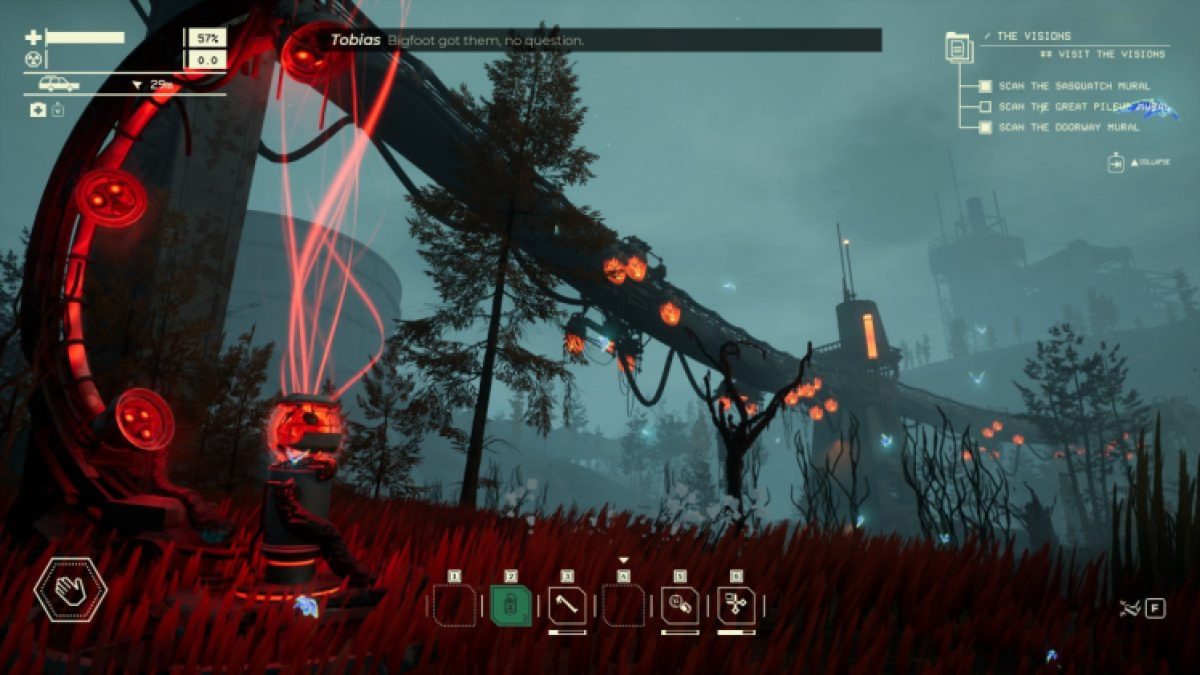
A theme to die for
I have always been an avid fan of science fiction, and few writers top my reading list as often as Arkady and Boris Strugatsky. These writers from behind the Iron Curtain produced science fiction at a time when it was completely banned, and they wrote with a style unmatched now or then. Some of you may know the book Roadside Picnic, and if not the book, then most likely the art that has sprung from it.
Pacific Drive has placed itself amongst the many other homages to this seminal piece of writing. The film Stalker and, of course, the video game S.T.A.L.K.E.R. are both based heavily on this work, and now Pacific Drive has been added to the list. As I played Pacific Drive for review, I felt that the developers had captured the essence and horrors of a world adjacent to reality beautifully. Ironwood managed to inject just enough horror and uncertainty to emulate the feeling of the Exclusion Zones so familiar to previous renditions.
A different kind of fear
In Boris and Arkady’s book, the zone is a hostile place — not because it is malevolent, but because it has become inhospitable. The anomalies that exist within the zone are not inherently evil, as is often the case with other horrors, but simply not compatible with our understanding of reality. Life is full of new threats and dangers previously unknown to us.
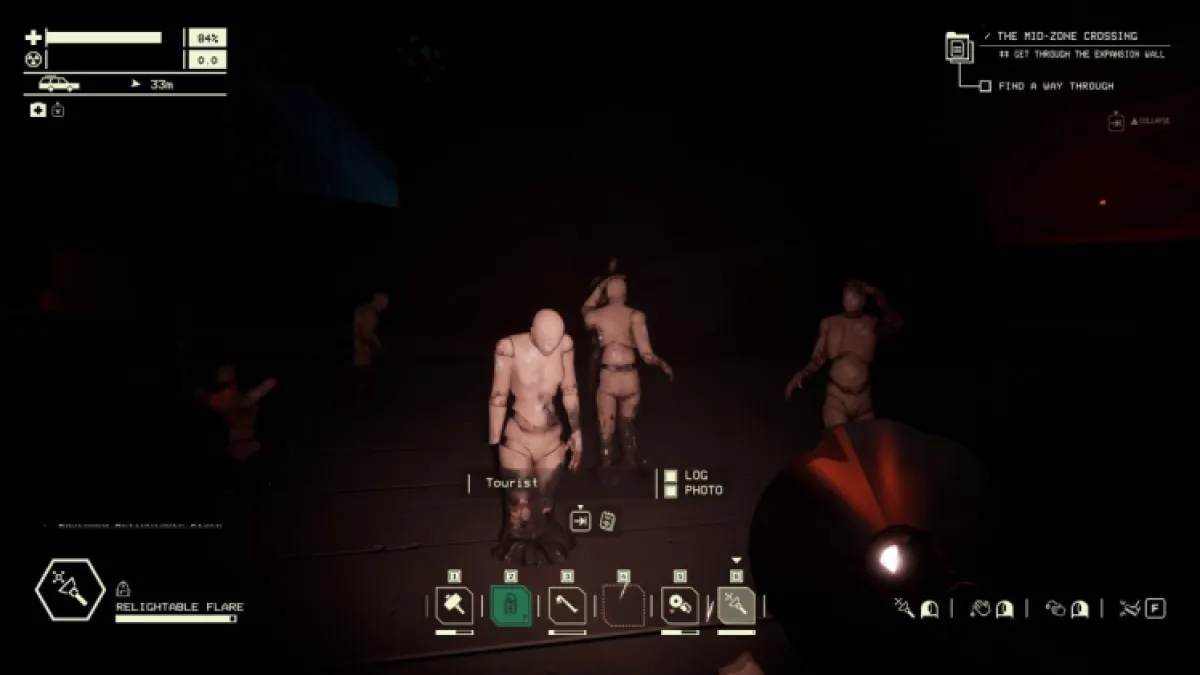
Now, with Pacific Drive, the atmosphere is all there. Horrific storms seem to spring from nowhere, buffeting and pounding the small and fragile car. Areas of confusion will jerk and pull you around the road. Mischievous ‘Rabbits’ and other beings will do anything they can to hijack your car and slam it into whatever is close. Everything falls into disrepair much faster. These various anomalies create an interesting sense of fear that is less of a threat and more of being in a world without reason or sanity.
A wealth of inspiration
The source material is very clear throughout the game, calling heavily on Roadside Picnic for inspiration. I feel they have made a valiant effort to draw from the classic book, and I love to see it. Ghosts, murderers, and demons are all too often tropes of horror games. I feel Pacific Drive delves nicely into the fear of the unknown.
Knowing the genre as I do, I know just how much the team had available to draw inspiration from. The source material goes beyond just Roadside Picnic, with the genre spanning many other outlets. One of the best is the SCP files. These are fan fiction pieces written for a wiki describing the many anomalies that exist among us — fictional, of course. The imagination and variety are vast.
I found the anomalies in Pacific Drive to be fun but rather one-dimensional. They all had one purpose in mind, and that was to mess with your car. I would have liked to see some of the more bizarre and placid anomalies in the game. They hint at a few, such as the Sasquatch, but never dig in.
Taking the gameplay for a drive
The premise of Pacific Drive is simple. You’re a car. Of course, you can get out of the car to collect resources, fix the darn thing, and enter points of interest, but on the whole, you’re a car. You must load up with provisions, including repair kits, food, and tools for collection. Then, ensuring you, the car, is in as good condition as it can be, head into the anomalous wastes.
After planning a route, it’s time to make your way into the world. This is already predestined to an extent, and you will be told how many areas you need to drive through before reaching your destination. Once at your destination, you can only return to the Pacific Drive garage through portals. This means you never have to drive back yourself, which is a relief. The route is often hard.
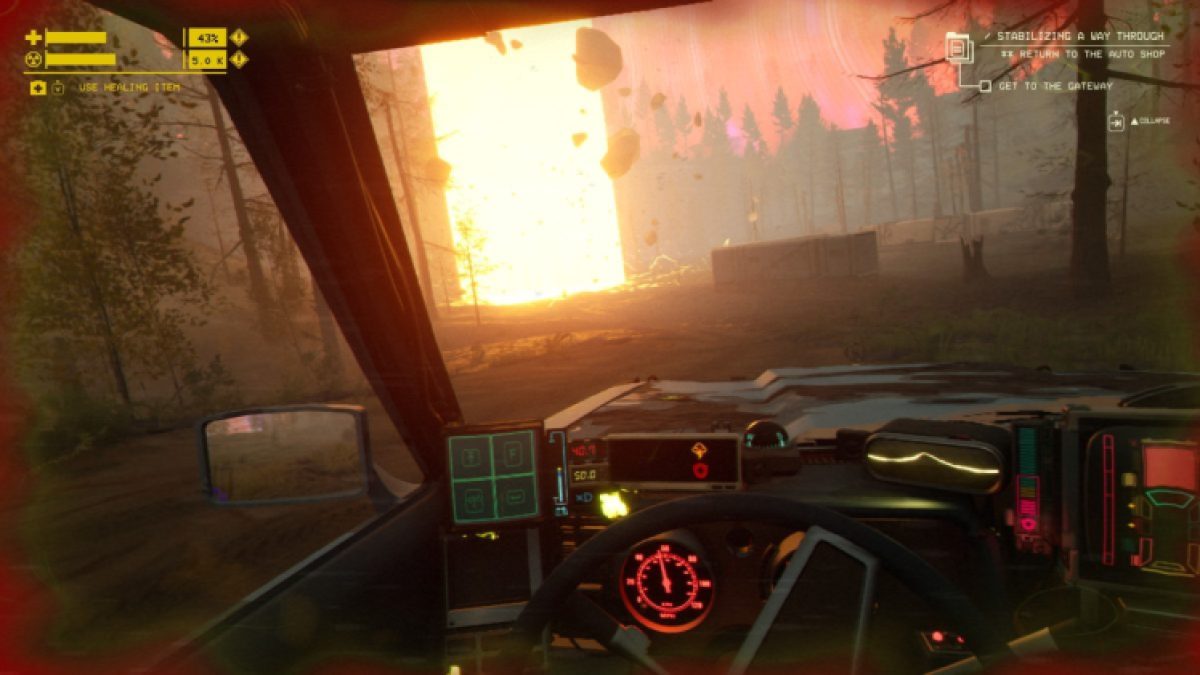
Each of the various areas you drive through will have its own anomalies and traits. Some will have heavy storms, others will be incredibly dark, and some will have a huge amount of a certain anomaly. I often found myself praying for a daytime drive through a storm-free mountain. Depending on how far you go and where you have unlocked on the map will determine how many different areas you need to drive through.
The aim of Pacific Drive is to collect as many resources as possible, fulfill small tasks for the voices on the radio, and return alive and with your car intact. Over time, you will make your way deeper into the zones. This results in better resources and, therefore, better gear. In my hours of playing Pacific Drive for review, I only failed to make it back once, but there were a lot of close calls.
Does the loop stay exciting?
The gameplay loop for Pacific Drive is a fun one. However, the enjoyment was periodical. I looked forward to the jaunts into the exciting areas of the map, listening to the chatter on the radio from the three characters. The anomalies were fun to avoid, and I found satisfaction in upgrading my car.
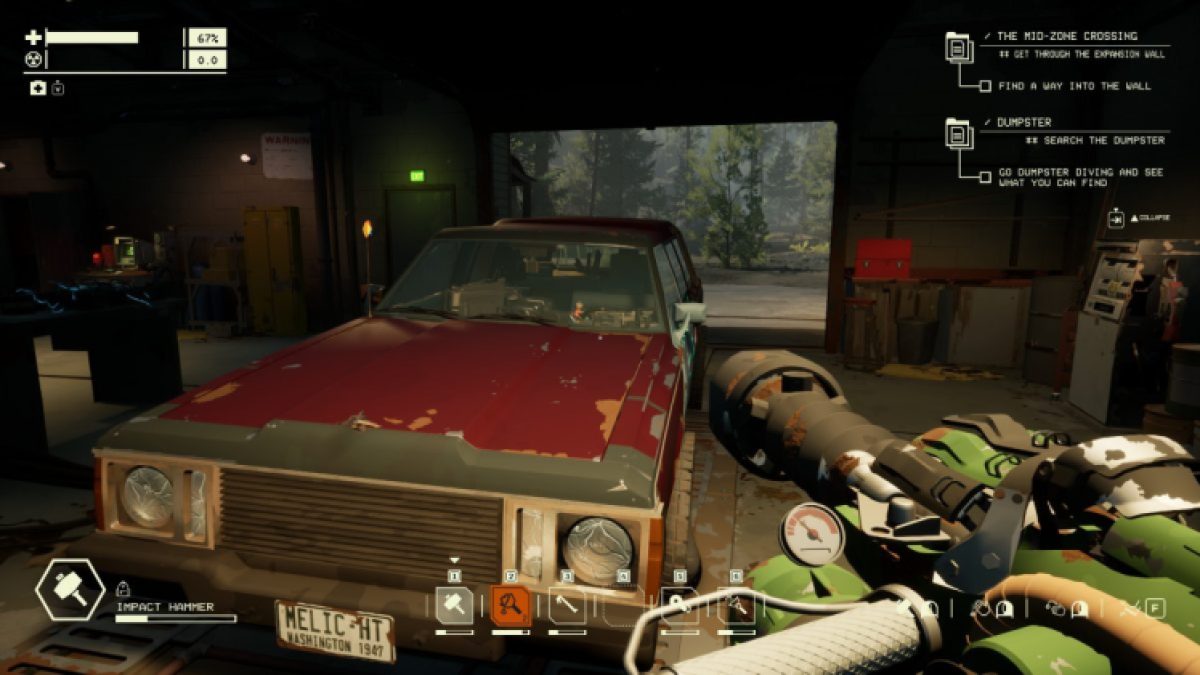
However, it took a solid 5 hours before I was really into the upgrades. Before that, it was just a slog to try to get in and out, running out of essential resources constantly. I feel that the loop, although fun, really needs to be a lot quicker. I am not complaining that the game is too hard — it isn’t — but the progress is far too slow.
The game has some wonderful things to offer, especially for a fan of the theme. But when I am running through the same levels, with the same resources, and the same anomalies for the 10th time, it starts to feel like a chore. Pushing into new zones produces new environments and brings back the excitement once more; I just wish that had happened maybe 2 1/2 hours earlier.
An artistic team
Ironwood Studios has opted to use the rather dated but incredibly stylish Unreal Engine 4. They have produced a game dripping with atmosphere and beauty. The team has taken care to make everything — from the voice acting, to the driving rain — as thematically fitting as possible.
One of the earlier journeys I made while playing Pacific Drive was a particularly hard journey. My battery was low, I had to use my reserve fuel, and the anomalies had beaten my car to scraps. I hobbled to the extraction in the pouring rain, barely making it out alive. As my car rolled into the garage and the overpowering sound of the storm was muted by the roof and safety of the workshop, I sat back and sighed.
A clear contrast
The feeling of safety was palpable. The screams and moans of the anomalies and bellowing crashes of the storm were behind me, left in the zone. The silence and safety of the garage were back. As I sat in the car, I realized I had hit the radio button, and the gentle sounds of a twinkly indie track lulled me back to a regular heartbeat.
Inside the zone, life is hell. It is unpredictable, seemingly always dark, and you never know what is out to get you. Numerous times, on trips too far from the safety of my car, the only way I found my bearings through the screaming wastes was by looking for my headlights in the dark. Watching them being dragged away into the woods by an anomaly as something breathes down your neck is terrifying.
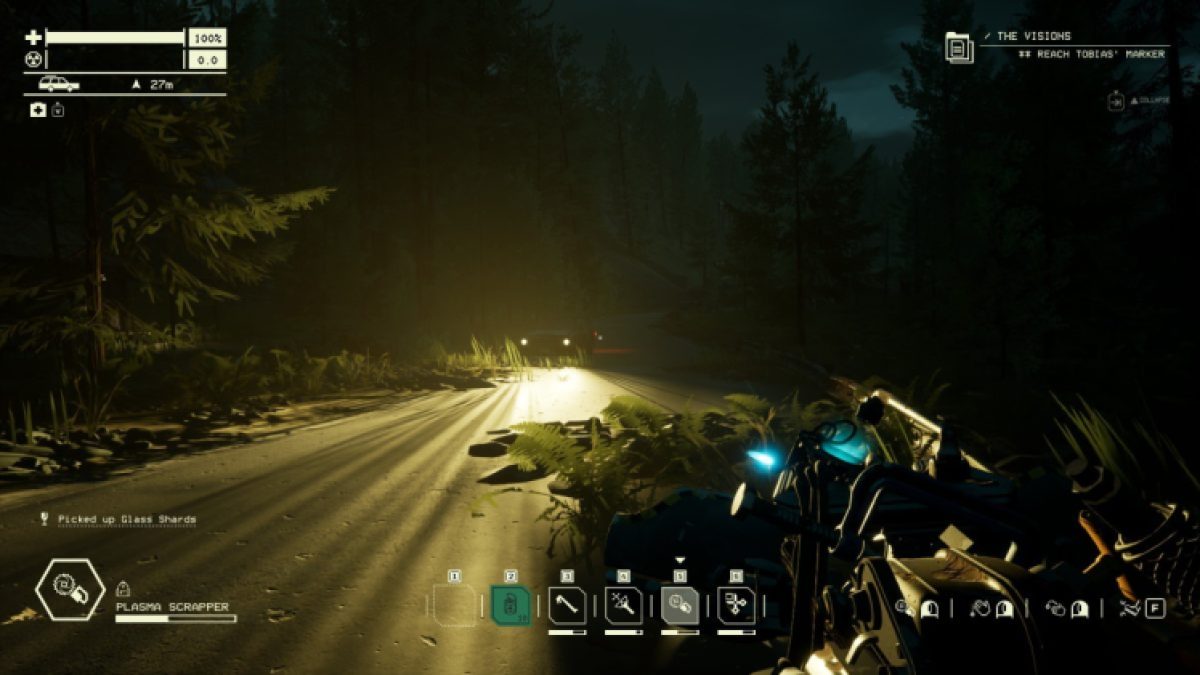
This contrast in Pacific Drive, of the fear of the wasteland and the comfort of the garage, helps numb the repetition of the gameplay loop. Once you’re out in the field with a trunk full of goodies, all you want to do is get back to safety. When you return and turn those goodies into armored plates and off-road tires, you want to get back out and see just how far you can go.
I have to give credit to the team at Ironwood for truly creating an immersive and exciting experience. Their ability to create such tension, mayhem, and a feeling of almost jarring cozy safety is impeccable. It is due to the wonderful lighting, top-tier sound design, and deep understanding of how the human mind works.
Difficulty level: Stressful
When playing a game for review, such as Pacific Drive, I like to go with the settings suggested by the team. This often makes my reviews take longer, but I feel like the experience is more genuine. With Pacific Drive, there are no difficulty settings, per se, but there are a lot of adjustable sliders, and this is fine.
Playing Pacific Drive with the recommended settings has everything out there trying to kill you, and everything is done manually. If your doors are open in the Olympic Exclusion Zone, you’re getting blasted by radiation. And if your battery is dead, no more headlights. If you want to change a broken panel in your workshop, you need to remove one, drop it, pick up the other, and screw it on.
I love all these little quirks and time sinks. They make the game feel more like I am the one struggling and pushing against time constraints. If my headlights die, that is my fault for not remembering to bring a battery charge. Placing the various panels and hand-fixing the headlights makes me feel more connected to my beloved car (she’s called Betty). However, all these can be turned off.
Take a load off
If you want to sit back a bit and enjoy the ride, take in the story, and just marvel at the interesting and varied landscapes of Pacific Drive, you can tailor it to your own needs. Now, I don’t think this is the same as changing fear levels in games; it just gives it more accessibility. “Difficult” isn’t for everyone — we can’t all get paid to play games.
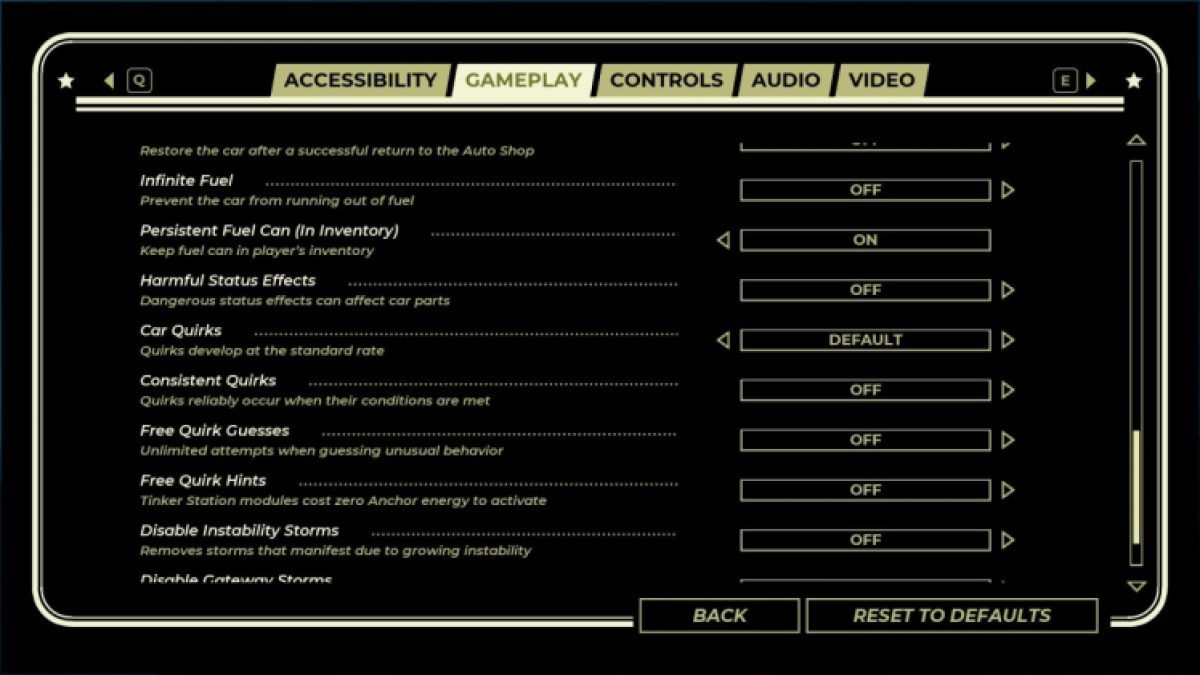
Personally, I found the difficulty level perfect during my playthrough. All the way into the final zone, my progress and upgrades matched the struggles. Up until the end, I was still hurling my car over cliff edges and through trees to reach the extraction zone, running my car on fumes and with my lights flickering. I was always just on the edge of wrack and ruin through to the endgame.
This kind of well-tailored difficulty is what helps give the game the playability it has. Escaping from a zone by the skin of your teeth has you stuck in that ‘One more run’ mindset we all know. Pulling your battered car into the garage after just making it back alive is invariably rewarded with some real goodies and a whole bunch more upgrades to install.
A Roadside Picnic or gas station sushi?
The one real gripe I had while playing Pacific Drive is its length. If the progress had been sped up a little, allowing fewer trips between progress and lowering the needed resources for advancement, it would have nailed it. This simple indie game has a wonderful premise and a theme close to my anomalous heart, but it drags it out too long.
Too many times, I found myself driving through the same areas without any plot progress to speak of. The radio chatter was quiet, I was running back and forth to the same buildings for resources, and the progress was negligible. It’s these quiet times between the Lovecraftian hellscapes that lost me a little.
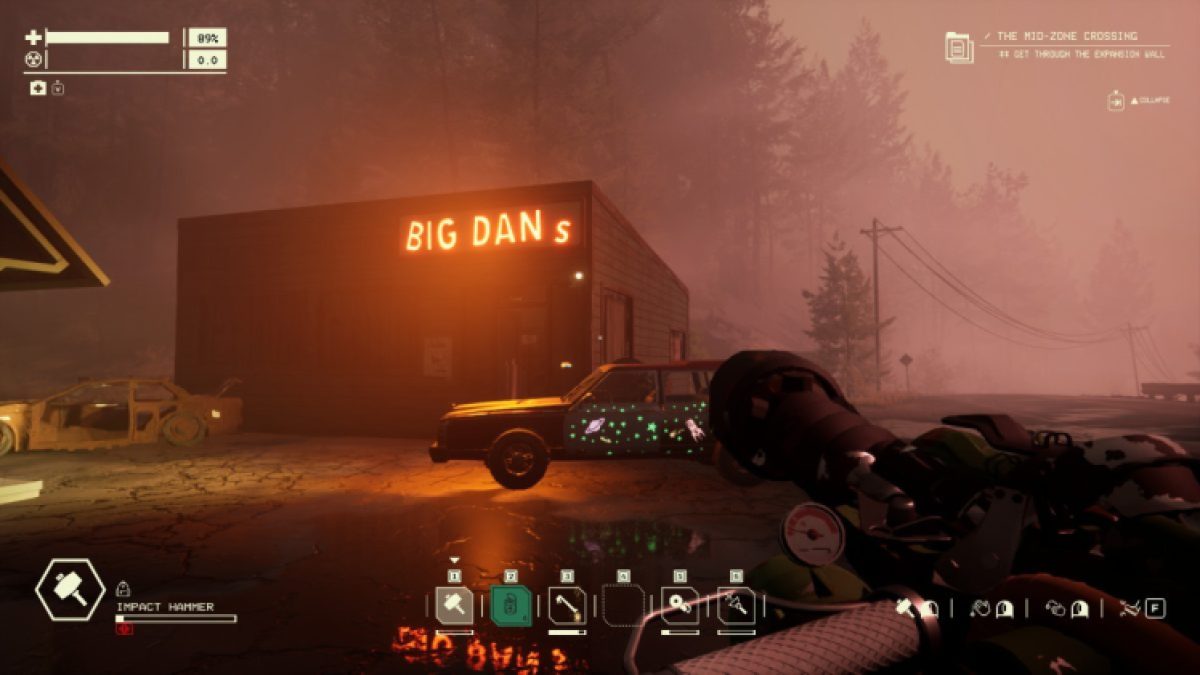
However, outside of this small hiccup, I think the game is a beautiful work by an indie team. I found Pacific Drive dripping with atmosphere and nail-biting horrors. The soundscapes and environments are snatched straight from the S.T.A.L.K.E.R. playbook. Dark corners, screaming fog, and untold horrors lurk in every run-through, with the only safe haven being an oil-stained garage or your incredibly fragile station wagon.
Don’t go expecting a AAA open-world game with Pacific Drive. Ironwood Studios has a clear destination in mind as soon as you start the game, and it is up to you to enjoy the narrative. They tell a great story with some very satisfying gameplay that will leave you sweating and fearful. For its low price, I recommend anyone pick Pacific Drive and have a crack. It is perfect for the casual player or the die-hard gamer.

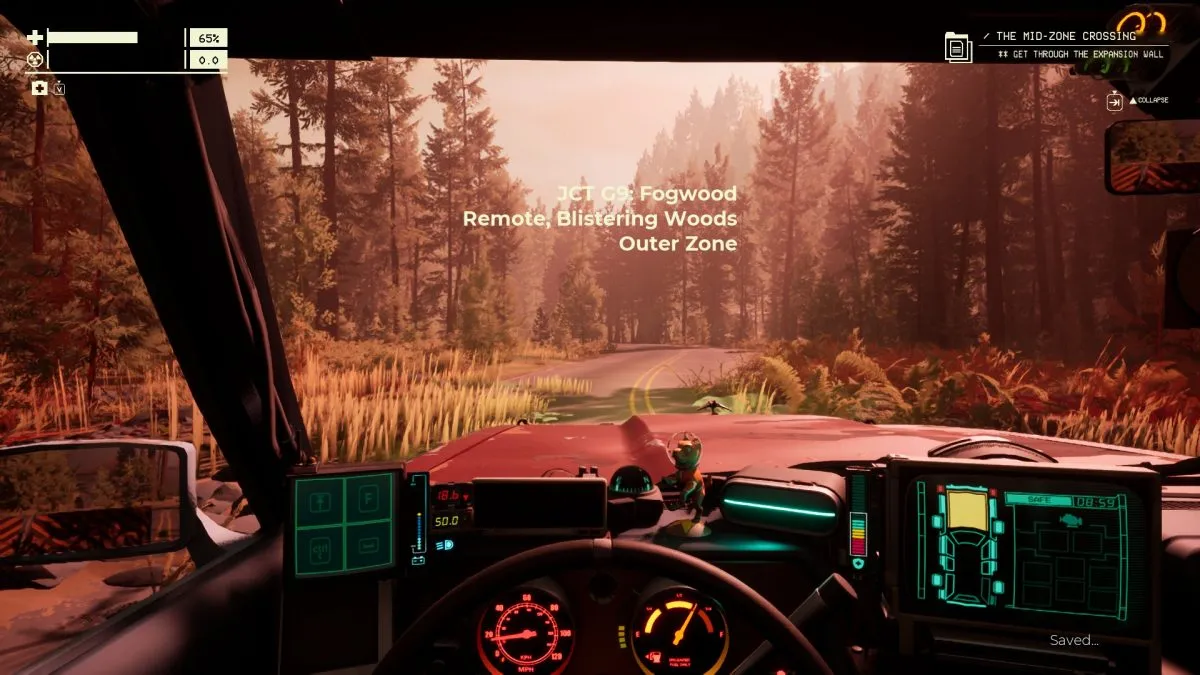






Published: Feb 22, 2024 02:40 pm